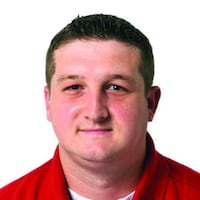The Springfield News-Sun has extensively reported on the city and park district’s struggles to make golf financially stable, including digging into its budgets and covering when Snyder Park closed for repairs, a resident’s review of the operations.
Three municipal golf courses in Springfield have struggled to be reliably self-sustainable, but National Trail Parks and Recreation District hopes to have a three-year plan in place soon to reach financial stability
It’s been debated for a few years whether the city — which will likely provide a total of about $1.275 million next year for overall park operations — should continue to subsidize golf and what needs to be done to make the courses self-sustainable. Options have included closing one or more courses, particularly Snyder Park Golf Course, and cutting payroll.
“If we’re going to be in the golf business, we have to be at a level where we can compete,” City Commissioner Kevin O’Neill said. “Whether it’s one golf course, or three golf courses, we’ve got to be competitive.”
Springfield city commissioners tentatively agreed to budget $1.1 million for overall park district operations at a preliminary budget meeting this week, but for the first time requested the district earmark $50,000 of that for golf course maintenance. Another $175,000 from the city is recommended to go to the district for other non-golf capital projects, such as possibly dredging ponds.
Last year, Snyder saw a drop of more than 8,500 rounds of golf, likely due to poor greens conditions that led the city commission to approve an additional $175,000 subsidy in late 2011 to pay for an overall deficit among the three courses. It initially granted about $1.45 million for 2011 to the district for its overall operations, including golf.
The park district received $1.6 million in 2010 from the city for its overall operations.
Mike Bostick, chairman of the board of the Springfield Golf Association said he’s confident that all three courses — Snyder and the two at Reid Park Memorial Golf Course — could remain open if a proposed three-year plan is approved and course maintenance is kept up.
“They’re on the right track overall in making everything self-sustainable,” he said.
Snyder also lost several months of play this year when the parks board decided to temporarily close the 18 holes there so its practically unplayable greens could be repaired. Too much rain and flooding caused the deterioration, district officials said.
So far this year, it drew more than 8,800 rounds, about 6,400 less than the same period last year, according to a report from the district. Rounds at the three courses combined fell by about 860.
City commissioners believe deferred maintenance has kept the course from being as competitive as it needs to be with other golf courses in Clark County.
“It almost cost us a golf course totally,” said O’Neill, the commission’s liaison with National Trail.
The conditions at Snyder have improved, O’Neill said, which will help them be competitive in the coming years. It reopened to play in late June after the district spent $5,000 to $6,000 on rehabilitating the greens.
“As a golfer, the conditions are pretty decent right now,” Bostick said.
The National Trail board will meet at 4:30 p.m. Nov. 27 to discuss how to make golf operations sustainable over a proposed three years. It will consider course statistics, cost comparisons to privately owned courses, marketing techniques and a citizen golf committee’s assessment of the operation.
The committee’s assessment recommended, in part: giving the courses a three-year trial period, hiring a manager to grow the number of rounds, adjusting fees and packages to attract more players, and implementing an enhanced record-keeping system for better analysis of the rounds played.
Bostick wasn’t on the golf committee, but said he felt their recommendations were a good start. The golf association has about 80 members.
The parks board could vote on its plan as early as its Dec. 10 meeting, but the details hinge on how the city’s annual subsidy to National Trail falls into place. City commissioners will hold a public hearing on their budget Dec. 4 and will vote on it Dec. 18.
O’Neill said he believes in giving all three courses more time, and if that can’t happen, to make a decision down the road.
The parks board gained two members recently with golf and business operation experience — Jim Kincaid, a former president of the Southern Ohio PGA, owner and partner of Korporate Kasuals in Dayton and a golf sales representative; and Jack Simonton, manager of Keg ‘n Cork and a golfer.
The city commission’s goal is for golf courses to be self-sufficient, including maintenance, within a three-year period, or changes need to be made. O’Neill also believes the National Trail should have rainy day funds available in case it has a shortfall.
NTPRD Director Leann Castillo said the goal for all fee-based recreational activities should be to break even unless it provides a service for youth.
“It’s our responsibility as a parks and recreation district that we offer opportunities for everyone in our community,” she said.
She believes Splash Zone Family Aquatic Center would’ve covered its costs for the first time this year, if not for bad weather late in the summer.
“It’s something we have no control over,” Castillo said.
About the Author
